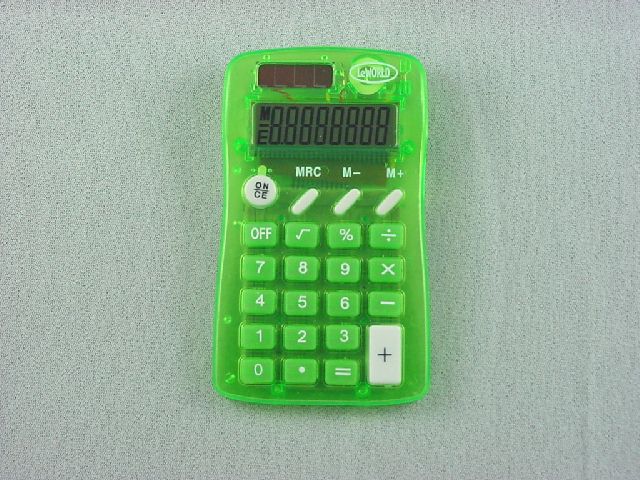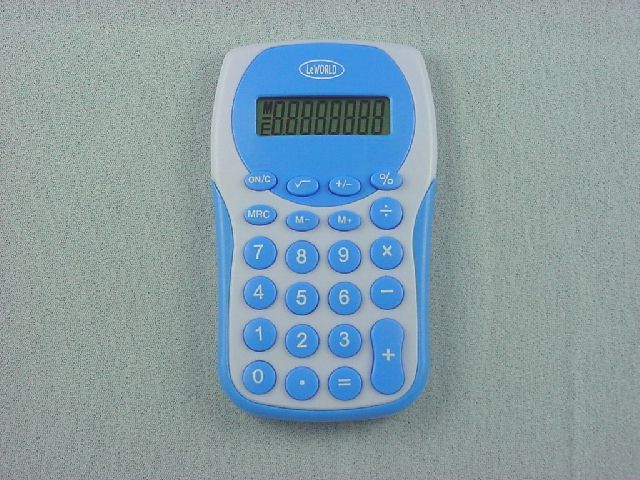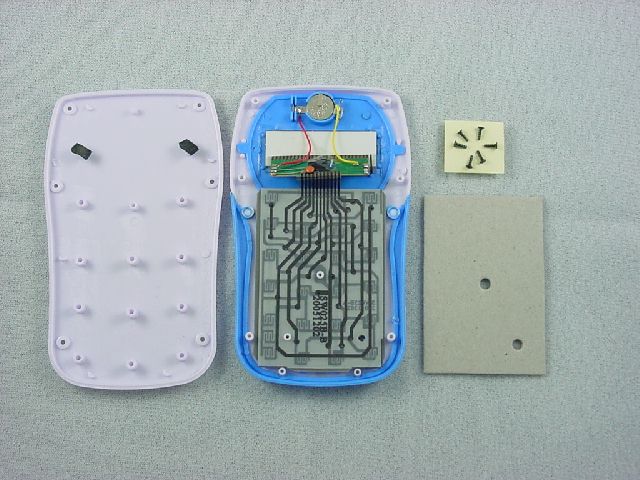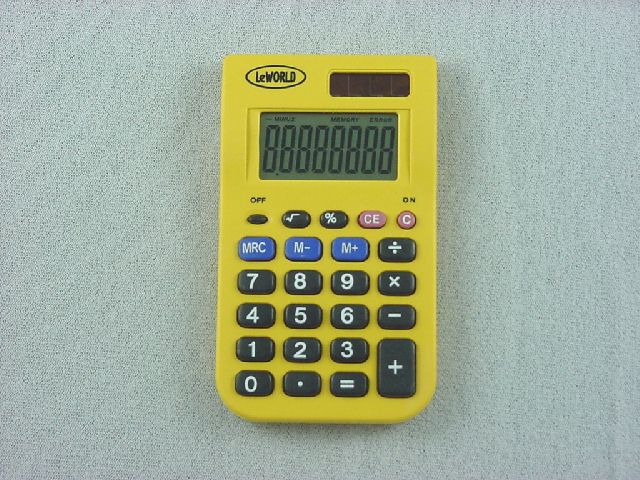


Case back (left), and case front and electronics (right).
The grid on the back of the case supports the membrane keyboard. This provides very good support for the keyboard. I've seen this technique used in the past on more expensive calculators.
Text and Images Copyright (C) 2006 Mike Sebastian
LeWORLD calculators are distributed by World Import Co., Inc.
This little calculator really surprised me. I've purchased versions of it in the past (maybe with a different model number, but with a substantially similar appearance), and I have been very disappointed. This calculator had none of the problems I'd seen in the past.
As I mention below, this calculator has a membrane keyboard, where conductive pads beneath each key short out contacts printed on a plastic sheet when the key is depressed. The raised plastic grid on the back of the case supports the membrane and provides solid support for the contacts. This kind of structure has been used in other calculators in the past (e.g. the second version of the TI-36X), and in my experience has proven to be very reliable.
This calculator has a real solar cell, and the solar cell can power the calculator without the battery.
About the only real complaint I have about the construction of the calculator is the way the PCB just floats inside the case, but the PCB is of sufficently low mass that I don't think this will be a problem.
 |
LeWORLD 239 calculator. | |
 |
Back side of calculator. Note PCB is floating inside the case. | |
 |
Case back (left), and case front and electronics (right). The grid on the back of the case supports the membrane keyboard. This provides very good support for the keyboard. I've seen this technique used in the past on more expensive calculators. |
This calculator is very stylish, and I was honestly expecting a decent calculator. Other than the keyboard, this would be a nice calculator.
The keyboard is horrible. Each key requires a different amount of pressure to register. For example, it felt like I had to push the 8 key below the keyboard bezel to get it to register. I realized why the keyboard was so bad once I opened the calculator. The membrane for the keyboard was supported by a piece of cardboard. Yes, cardboard, and not even decent quality cardboard.
 |
LeWORLD 239 calculator. |
 |
Case back (left), case front and electronics (center), and cardboard plate that supports the keyboard (right). The exterior was good, except for points on wrap-around accent that may catch on clothing if the calculator is actually put in a shirt pocket. The cardboard plate resulted in a keyboard that felt mushy, with each key requiring different pressure to register. The cardboard plate itself was relatively soft. |
Everything I didn't like about this calculator centered on the display. I didn't like the tall-narrow digits, and I didn't like the way the display was supported.
The tiny OFF key just looks silly.
The styling for this calculator looks to have been borrowed from a design sold by the Royal Consumer Business Products company several years ago. The Royal calculator had a full sized OFF key, but the plus key was the same size as the other keys.
 |
LeWORLD 2079 calculator. |
 |
Case back (left), case front and electronics (right). Note the scrap piece of black foam to support the display. Interior case surfaces were rough like the molds had been modified. |
This calculator, like the other desktop calculators in this evaluation, really didn't impress me. The battery on this calculator had started to leak, with the resulting corrosion preventing good contact between the battery and battery contact. The PCB was heat staked with two pins, but one pin had broken off. The keyboard membrane was heatstaked. Three screw posts were split. The display was poorly supported. The keyboard had a relatively heavy touch, with the pressure center of many keys not being the center of key.
 |
LeWORLD 2600D desktop calculator. |
 |
Case front and electronics (left), and case back (right). |
Last updated July 8, 2006